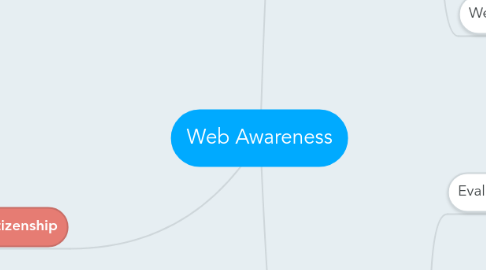
1. Digital Citizenship
1.1. REP's
1.1.1. Respect Your Self/Others
1.1.1.1. Access
1.1.1.2. Law
1.1.2. Educate Your Self/ Connect with Other
1.1.2.1. Literacy
1.1.2.2. Commerce
1.1.3. Protect Your Self/Others
1.1.3.1. Rights and Responsibility
1.1.3.2. Health and Welfare
1.2. Nettiqette
1.2.1. Set of rule for how we should act online
1.2.1.1. Common Curtacy
1.2.1.2. Respect
1.2.1.3. Treat the people the way you want to be treated
1.2.1.4. Don't be rude
1.2.1.5. Stay clear and to the point
1.2.1.6. Keep personal information private
1.2.2. Where?
1.2.2.1. Online Games
1.2.2.2. Email
1.2.2.3. Chatrooms
1.2.2.4. Forums
1.2.2.5. Blogs
1.2.2.6. Social Media
1.2.3. Whats not ok
1.2.3.1. Rude Emails
1.2.3.2. Trying to start arguments
1.2.3.3. Flaming
1.2.3.4. Trolls
2. Internet Safety
2.1. Cyberbullying
2.1.1. What is it?
2.1.1.1. 1/4 of all youth have been cyberbullied
2.1.1.2. invisibility of bully, witnesses, and collaborators
2.1.1.3. enable bullying to happen anywhere at anytime
2.1.2. What can we do?
2.1.2.1. talk to students at any age about responsible internet use
2.1.2.2. take action when bullying is seen
2.1.2.3. affective intervention programs
2.1.2.4. change the culture in which the bullying is happening
2.2. Sexually Explicit Material
2.2.1. Pornography
2.2.1.1. impacts - receiving distorted information about sex, violence or abusive sexual relations, obsessions with body image
2.2.1.2. responding - talk to kids about healthy sexual relationships from young age, exercise critical thinking with kids about sexual stereotypes
2.2.2. Sexting
2.2.2.1. 3 Contexts: en lieu of sex, to show interest in someone, and sexually active teens
2.2.2.2. problems: might feel forced, might be shared with a wider audience then intended
2.2.2.3. responses - charges of 'child pornography' to those who share sexts outside the intended, don't take punitive approach, consider the context
2.3. Web Awareness for Teachers
2.3.1. in loco parentis
2.3.1.1. teacher stands as an unofficial guardian of the child when the parent is not present.
3. Authenticity
3.1. Evaluating Criteria
3.1.1. Authority
3.1.2. Coverage
3.1.3. Objectivity
3.1.4. Accuracy
3.1.5. Currency
3.2. Marketing to Kids
3.2.1. Pester Power
3.2.1.1. hope to get kids to pester their parents enough to get it
3.2.2. Brand loyalty
3.2.3. Buzz or Street marketing
3.2.4. Internet Specific
3.2.4.1. Part of youth culture
3.2.4.2. Children are usually unsupervised
3.2.4.3. Parents don't usually know the extent of their childs internet capabilities
3.3. Copyright
3.3.1. Why?
3.3.1.1. award an author for their creative efforts
3.3.1.2. discouraging people copying that work
3.3.2. Who?
3.3.2.1. separates the physical work of creating something with the actual piece of work
3.3.2.2. the person who did the work/ "first owner"
3.3.3. and the Internet
3.3.3.1. most things on the internet are subject to copyright
3.3.3.2. just because they are free to your use does not mean they are free for you to claim
